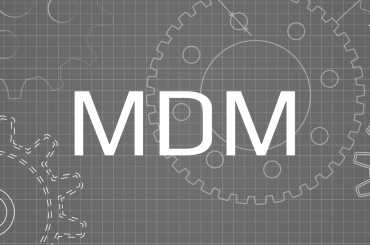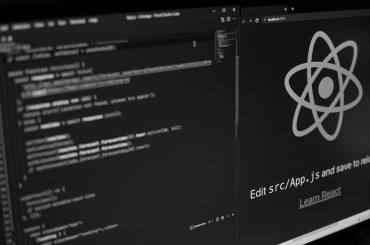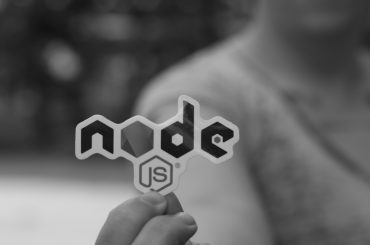In today’s digital landscape, creating stunning web applications that captivate users has become a priority. Thankfully, React, a popular JavaScript library, empowers us to create stunning interfaces. However, with the abundance of UI libraries available, choosing the right one can be overwhelming. But fear not! We’ve conducted thorough research to make your decision easier. Allow us to present the best React UI libraries that will elevate your web app aesthetics to the next level!
Before we dive into our best React UI libraries, let’s take a moment to cover some basic concepts that will help you grasp the fundamentals of React UI component libraries. Understanding these concepts will provide you with a solid foundation to explore and utilize these libraries effectively. So, let’s get started!
What Are React UI Component Libraries?
React UI component libraries are a collection of pre-built and reusable user interface elements specifically designed for React applications. These libraries provide a comprehensive set of components, styles, and utilities that simplify the process of creating visually appealing interfaces. React UI component libraries encapsulate the best practices and design patterns, enabling developers to focus on building functionality rather than reinventing the wheel.
The components offered by these libraries range from basic elements such as buttons, forms, and cards to more complex components like data tables, charts, and modals. They are typically built with performance, accessibility, and responsiveness in mind, ensuring a seamless user experience across devices and browsers.
React UI component libraries follow the principles of component-based architecture, promoting modularity and reusability. Each component encapsulates its own logic and styling, making it easy to integrate into various parts of your application. This modular approach facilitates code maintenance, scalability, and collaboration among developers.
Advantages of Using a React UI Components Library
When it comes to developing web applications with React, utilizing a UI components library offers several advantages that streamline the development process and enhance the overall user experience. Let’s explore some key benefits:
Consistent and Reusable Components: A UI components library provides a set of pre-designed and reusable components, ensuring consistency in design across your application. This consistency not only saves development time but also creates a cohesive and professional user interface.
Faster Development and Prototyping: By leveraging a UI components library, developers can accelerate the development process. These libraries offer ready-to-use components with built-in functionalities, reducing the need for manual coding from scratch. Rapid prototyping becomes easier, allowing you to quickly visualize and iterate on your application’s design.
Improved Design and User Experience: UI component libraries are often designed with user experience (UX) best practices in mind. By using these well-crafted components, you can enhance the overall look and feel of your application, resulting in a more intuitive and visually appealing user interface.
Code Consistency and Maintainability: Adopting a UI components library ensures code consistency within your project. With a set of standardized components, your team can adhere to a common coding style, making the codebase more maintainable and easier to collaborate on.
Theming and Customization: Many React UI libraries offer theming and customization options. This enables you to tailor the visual appearance of your application to match your brand identity or specific design requirements. Customization features often include color schemes, typography options, and style overrides, allowing you to create a unique and personalized user interface.
By harnessing the advantages offered by React UI components libraries, you can streamline your development process, create visually appealing interfaces, and deliver an exceptional user experience. Now, let’s explore our top 10 picks for React UI libraries that embody these advantages and empower you to build beautiful web applications.
Top 10 React UI Component Libraries for 2023
1. Material-UI: Unleash the Power of Material Design
Material-UI stands as a shining star among React UI libraries. Embracing the principles of Material Design, it offers a comprehensive set of components, themes, and styling options. With Material-UI, you can effortlessly create sleek and modern interfaces that align with Google’s design guidelines. It’s extensive documentation and active community support make it a go-to choice for developers of all skill levels.
Key Features and Benefits:
- A vast collection of pre-designed and customizable components for quick development.
- Material Design theming support for consistent and visually appealing interfaces.
- Responsive design principles for seamless experiences across devices.
- Integration with popular state management libraries like Redux and MobX.
Learn how we helped UK’s biggest travel add-on company build an awesome website using React.
2. Ant Design: Elegant and Feature-Rich Components
Ant Design is renowned for its elegance and feature-rich components, making it a popular choice for developers worldwide. With meticulously designed components and comprehensive documentation, Ant Design allows you to build professional-looking interfaces effortlessly. Its customizable themes, built-in internationalization support, and accessibility features make it an ideal choice for enterprise applications.
Key Features and Benefits:
- A rich set of components with consistent design patterns for rapid development.
- Customizable themes and styles to match your application’s branding.
- Excellent support for internationalization, ensuring a seamless user experience across languages.
- Built-in accessibility features, adhering to WCAG standards for inclusive design.
3. Semantic UI React: Simplify Styling with Semantic Classes
Simplicity and ease of use define Semantic UI React. It provides a library of semantic classes that simplify the process of styling your web application. With Semantic UI React, you can focus on building functionality while effortlessly achieving visually appealing designs. Its extensive collection of components and responsive grid system enables you to create intuitive and responsive interfaces with ease.
Key Features and Benefits:
- Semantic classes describe the purpose and meaning of the elements for intuitive styling.
- A wide variety of components, such as buttons, cards, and menus, for diverse interface requirements.
- Responsive grid system for building flexible layouts that adapt to different screen sizes.
- Integration with popular tools like Webpack and Babel for easy setup and configuration.
4. Blueprint: Robust and Customizable Components
Blueprint is a React UI library that emphasizes robustness and customization. It provides a comprehensive set of high-quality components that are easily customizable to match your application’s unique design requirements. Blueprint’s focus on accessibility and responsiveness makes it an excellent choice for building inclusive web applications.
Key Features and Benefits:
- Well-documented and customizable components for flexibility and consistent design.
- Strong emphasis on accessibility and adherence to WCAG guidelines.
- Support for right-to-left (RTL) languages, enabling localization for diverse audiences.
- Comprehensive TypeScript support for type safety and improved developer productivity.
5. Carbon: IBM’s Design System for Enterprise Applications
If you’re working on enterprise-level applications, Carbon is a React UI library worth considering. Developed by IBM, Carbon is a comprehensive design system that offers a set of reusable components and guidelines for creating consistent and user-friendly interfaces. With Carbon, you can leverage IBM’s expertise in UX design to build powerful and visually appealing web applications.
Key Features and Benefits:
- A wide range of components and patterns for building enterprise-grade interfaces.
- Consistent design language and adherence to accessibility standards.
- Thorough documentation and a vibrant community for support and collaboration.
- Integration with other Carbon libraries, such as Carbon Icons and Carbon Charts, for a complete design system experience.
6. Evergreen: Delightful UI Library with a Focus on Design System
Evergreen is a React UI library that focuses on providing delightful and intuitive components. It offers a set of reusable building blocks that can be combined to create visually appealing interfaces. Evergreen’s emphasis on a design system approach makes it a fantastic choice for maintaining consistency and scalability across projects.
Key Features and Benefits:
- A wide range of beautifully designed and customizable components.
- Focus on performance optimization for smooth user experiences.
- Theming support to match your application’s visual identity.
- Built-in accessibility features and adherence to best practices for inclusive design.
7. Grommet: Powerful and Themable Component Library
Grommet is a powerful React UI library that empowers you to build scalable and accessible web applications. It offers a vast collection of components, along with an intuitive theming system that allows you to customize the visual appearance of your interfaces. Grommet’s focus on responsive design and user experience optimization makes it an excellent choice for creating delightful applications.
Key Features and Benefits:
- Extensive library of components, including charts, forms, and data grids, for diverse application needs.
- Theming support with a simple and intuitive theming API.
- Responsive design principles for seamless experiences across devices.
- Built-in accessibility features and keyboard navigation support.
8. React Bootstrap: Bootstrap’s Power with React’s Flexibility
React Bootstrap combines the power of Bootstrap, a popular front-end framework, with the flexibility of React. It provides a set of pre-designed components that seamlessly integrate with React applications. With React Bootstrap, you can quickly create modern and responsive interfaces using Bootstrap’s familiar styling and layout system.
Key Features and Benefits:
- A wide range of components with Bootstrap’s well-known styling and behavior.
- Integration with React for seamless state management and component composition.
- Responsive design capabilities for building mobile-friendly interfaces.
- Active community support and regular updates from both the React and Bootstrap communities.
9. Rebass: Minimalistic and Styled Component Library
Rebass is a minimalistic React UI library that focuses on simplicity and customization. It provides a set of styled components that you can easily compose to build beautiful and functional interfaces. Rebass’s lightweight nature and flexibility make it a great choice for projects that require a small footprint without compromising on design.
Key Features and Benefits:
- Styled components with a minimalistic design aesthetic.
- Flexibility to compose and customize components to suit your application’s unique requirements.
- Responsive design capabilities for building interfaces that adapt to different screen sizes.
- Integration with popular state management libraries like Redux and MobX.
10. PrimeReact: Comprehensive Component Suite with a Rich Set of Features
PrimeReact is a comprehensive UI library that offers a wide range of components and features for React applications. It provides a rich set of tools for building powerful and visually appealing web interfaces. PrimeReact’s extensive collection of components, built-in theming support, and exceptional performance make it a top choice for developers.
Key Features and Benefits:
- A comprehensive collection of components, including charts, data tables, and calendars, for diverse application needs.
- Thorough theming support with multiple pre-designed themes and the ability to create custom themes.
- High-performance rendering and optimized interactions for smooth user experiences.
- Integration with popular state management libraries like Redux and MobX.
Conclusion
There you have it, our top 10 picks for React UI libraries! Whether you’re aiming for a sleek Material Design look, customization simplicity, enterprise-grade applications, or delightful and intuitive interfaces, these libraries have got you covered. Each library brings its unique features and benefits to the table, empowering you to create stunning web applications that captivate users. Choose the one that aligns best with your project requirements and let your creativity soar. Happy coding!
Contact us to know more about how we can help you build beautiful web applications.





